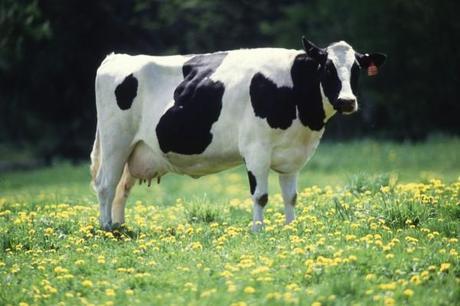
Following the Paleo diet is no small feat. Learning the ins and outs of what you can and cannot eat as a Paleo takes no small amount of research and resolve. For the dairy-lover, sticking to the rules is a Herculean achievement.
If you’re new to Paleo, this diet is modelled around that of our Paleolithic ancestors. Anything they ate, you can eat (including canned tuna and coconut flour cupcakes). Here’s how it works:
The Basics of Paleo
PALEO LOVES…
PALEO AVOIDS…
Veggies
Fruits
Nuts + Seeds
Lean Meats
Seafood
Healthy Fat
Processed Foods
Dairy
Grains
Legumes
Starchy Foods
Alcohol
It gets more complex between categories. (You need a good head on your shoulders to pull off Paleo). Among the allowed categories there are foods that are more encouraged than others, and some that are downright frowned upon.
Paleo’s Guide to Veggies
PALEO LOVES…
PALEO TOLERATES…
PALEO AVOIDS…
Sprouts
Ginger
Leafy Greens
Green Onions
Bell Peppers
Cucumbers
and much more…
Avocado
Cauliflower
Mushrooms
Fennel
Squash
Sauerkraut
Onions
Sugar Snap Peas
Tomatoes
Artichokes
Cabbage
Asparagus
Garlic
This list is by no means complete. One of the fun things about Paleo is that you can learn and tweak your diet as you go. There’s a learning curve. Even dedicated Paleos don’t always know all the rules, or strictly adhere to the ones they do know.
Dairy, on the other hand, is quite simple.
Paleo’s Guide to Dairy
PALEO LOVES…
PALEO AVOIDS…
Butter or Ghee
Everything Else
Giving up dairy is a tough pill to swallow for many current or would-be Paleos. But there might just be a loophole in the system. Let us consider.
Why Paleos aren’t allow dairy and how to get around it
The easy answer to this question is that Paleolithic man didn’t drink milk. Animal colonization didn’t start until about 9,000 years ago, though one study showed that even back then, we were drinking milk. Milk may not be Paleolithic, but it’s pretty primal.
Paleolithic men aside, here’s the science behind why Paleos are allowed dairy.
1. Casein
Once metabolized, the casein in milk from Holstein cows produces a chemical that messes with digestion, causing achy joints and even leaky gut syndrome in some, among other unpleasantries. Most commercial milk comes from Holsteins. These cows have a seemingly unlimited capacity to produce milk, more than any other type of cow, which is what makes them so popular on the modern dairy farm.
THE SOLUTION: Many older breeds of cows do not have this type of casein. Jersey and Guernsey cows produce a casein called A2 beta casein protein. Despite what its name suggests, the A1 version found in Holstein’s milk is a mutated version, which is why is causes so many problems. While non-Holstein milk may be tough to find in the U.S., most of the cows in Asia, Africa and Southern Europe produce the A2 type of casein.
Look for milk from Jersey, Asian or African cows and casein will not be a problem.
2. Lactose
Many health professionals believe that most of the world is lactose intolerant. Much of why our bodies can not tolerate milk is because our commercial milk is heavily pasteurized. Pasteurization kills nearly all of milks healthy properties, including the enzymes we need to digest it.
SOLUTION #1: Raw milk contains all the vitamins, enzymes and lactobacillus acidophilus our bodies need for healthy digestion. If the raw milk comes from an older breed of cow (i.e. not a Holstein), digestion shouldn’t be a problem.
SOLUTION #2: If lactose truly is the problem, fermented or cultured milk and yoghurt is the solution. During fermentation lactose is broken down into a more digestible format called lactic acid.
Fermented dairy tastes much better than it sounds! You can ferment your own milk in about 24 hours with kefir grains, which eat the lactose for you. Health food stores sometimes sell kefir grains, but because they are technically a live bacteria they can be difficult to find in stock. Try your local fermenter’s club or order them online. If you order online, make sure to do it within your own country, since bacteria don’t do so well with borders.
3. Inflammation
Some believe that dairy causes inflammation. This is only partially true. Inflammation is caused by an allergic reaction, but not to the milk. Commercial milk is full of antibiotics, among other funky things that are not naturally present in healthy, grass-fed cows. And remember, if milk is pasteurized our bodies can’t digest it anyway. Inflammation is the body’s way of waving a big red flag: “I can’t digest this! Please stop it!”
SOLUTION: Drink unpasteurized milk from an older breed of grass-fed cow.Find your local chapter of the Weston A. Price foundation, who will help you find a source of raw milk (as long as it’s not illegal in your country).
3. Processing
Paleos like to eat natural foods just the way the Earth made them. Processed food is a big no. Milk is a processed food! Almost all grocery store milk is pasteurized, sometimes even flash pasteurized, which means the milk is heated up to an extremely high temperature to kill all living bacteria both good and bad. But you can be Paleo and still enjoy raw milk! In fact, the paleo diet encourages healthy fats, of which raw milk has plenty.
SOLUTION: Drink raw, unprocessed milk.
The bottom line is that you must eat what makes you feel good, both physically and emotionally. If milk just isn’t sitting right with you, you probably shouldn’t be drinking it. However, if the idea of giving up dairy is preventing you from thriving on a Paleo diet, do your due diligence and find a source of quality raw milk from a grass-fed cow. It might be the thing that saves you falling off the Paleo wagon.
Be Sociable, Share!
